Valueerror: Could Not Convert String To Float:
Introduction (100 words):
When working with numerical data in programming languages like Python, you might come across an error: ValueError: Could not convert string to float. This error typically occurs when you try to convert a non-numeric string into a float datatype. In this article, we will explore the common causes of this error and discuss the various methods to handle it. We will also provide solutions for situations like reading CSV files, visualizing data, converting floats to strings, and handling special cases like commas in numbers.
Common Causes of ValueError: Could Not Convert String to Float (300 words):
1. Incorrect Format of the String: This error often arises when a string is not in the proper format for conversion to a float. For example, if the string contains alphabetic characters or multiple decimal points, the conversion will fail.
2. Presence of Non-numeric Characters: If the string you are trying to convert contains non-numeric characters, such as letters, spaces, or special characters other than the decimal point, the conversion will result in an error.
3. Usage of Special Characters: In some cases, the usage of certain special characters like currency symbols, percentage signs, or commas may lead to the conversion error. It is important to remove these characters or format the string appropriately before conversion.
4. Whitespace Issues: Extra leading or trailing spaces in the string can also cause the conversion failure. Trimming such whitespaces is necessary to avoid this error.
5. Localization and Decimal Separator Incompatibility: In different regions, the decimal separator might be a dot or a comma. Therefore, if your code does not account for these differences while parsing a string, the ValueError can occur.
6. Handling of Exponential Notation: Scientific notation may cause the conversion to fail if not appropriately handled. The ‘e’ or ‘E’ exponent notation can be encountered while converting a string to float.
7. Using Invalid or Unexpected Symbols: Sometimes, symbols or special cases like infinity or NaN (Not a Number) might be present in the string. These invalid symbols can trigger the ValueError.
8. Inadequate Error Handling and Exception Statements: Insufficient error handling and exception statements in your code can make it difficult to diagnose the exact cause of the ValueError.
Solutions and FAQs (1170 words):
Q1. How can I convert a string to a float in Python?
A1. To convert a string to a float in Python, you can use the `float()` function. For example:
“`python
string_num = “3.14”
float_num = float(string_num)
print(float_num) # Output: 3.14
“`
Q2. What if the string contains a comma as a decimal separator?
A2. If the string uses a comma as a decimal separator, you can remove it using the `replace()` method and then convert it to a float. For example:
“`python
string_num = “1,000.25”
float_num = float(string_num.replace(“,”, “”))
print(float_num) # Output: 1000.25
“`
Q3. How to handle a ValueError when reading a CSV file in Python?
A3. When reading a CSV file in Python, you can encounter the ValueError if the file contains non-numeric or improperly formatted data. To handle it, you can specify the `dtype` parameter while reading the CSV file to enforce the correct data type. For example:
“`python
import pandas as pd
df = pd.read_csv(‘data.csv’, dtype={‘column_name’: float})
“`
Q4. I get a ValueError while using seaborn heatmap. How to resolve it?
A4. The seaborn heatmap function may raise a ValueError if the data it receives cannot be interpreted as numeric values. Make sure that your data contains only numerical values or convert non-numeric values before passing them to the heatmap function.
Q5. How can I convert a float to a string in Python?
A5. To convert a float to a string in Python, you can use the `str()` function. For example:
“`python
float_num = 3.14
string_num = str(float_num)
print(string_num) # Output: “3.14”
“`
Conclusion (100 words):
Understanding the common causes of the ValueError: Could not convert string to float helps in troubleshooting the issue effectively. By being mindful of the string’s format, removing non-numeric characters, handling localization differences, and using appropriate methods, you can easily convert strings to float in Python without encountering errors. Additionally, handling exceptions properly and implementing robust error checking mechanisms will make your code more reliable and prevent such errors in the first place.
\”Debugging Python: Solving ‘Valueerror: Could Not Convert String To Float’\”
Why Can’T Python Convert String To Float?
Python, as a versatile and flexible programming language, offers a wide range of functionalities. However, one common issue that many Python programmers encounter is the inability to convert a string to a float. This can lead to frustration and confusion, especially when dealing with numerical calculations and data manipulation. In this article, we will delve into the reasons behind this limitation and explore potential workarounds. So, why exactly can’t Python convert a string to a float?
Python, like many programming languages, distinguishes between different types of data. Strings represent sequences of characters, while floats are used to represent decimal numbers. Converting a string to a float means interpreting the characters in the string as a numerical value. Python provides built-in functions to convert between data types, such as `int()` and `float()`. However, when attempting to convert a string to a float, several factors can hinder this process.
Data Validation:
One of the primary reasons Python can’t always convert a string to a float is the issue of data validation. Python, being a dynamically-typed language, allows variables to change their type during runtime. While this flexibility is beneficial, it also comes with potential pitfalls. Since a string can contain any sequence of characters, it becomes crucial to ensure that the string indeed represents a valid numerical value. If the string contains non-numeric characters or special symbols, attempting to convert it to a float will result in an error.
Consider the following example:
“`python
number = “3.14”
float_number = float(number)
print(float_number)
“`
In this case, the conversion is successful, and the console will output `3.14`. However, if we modify the `number` variable to `”3.14abc”`, Python will raise a `ValueError` since the string contains non-numeric characters. Therefore, it is essential to validate the input string before attempting the conversion.
Localization and Parsing:
Another aspect to consider when converting a string to a float in Python relates to the localization and parsing of numerical values. Different countries and regions use various symbols for decimal points and thousands separators. For instance, in the United States, a period is used as the decimal separator, while in many European countries, a comma is used instead. Similarly, thousand separators can be represented by commas or dots depending on the locale.
When converting strings to floats, Python relies on the underlying system settings or the program’s locale to determine the proper parsing rules. If the string uses a format different from what Python expects, it will raise a `ValueError`. To overcome this issue, programmers can utilize the `locale` module in Python to set the desired localization settings explicitly.
Rounding Errors and Precision:
Floating-point numbers, by their very nature, can be subject to rounding errors and lack infinite precision. Consequently, attempting to convert a string that represents a number with too many decimal places or an excessively large exponent can lead to inaccurate results. Python, adhering to the IEEE 754 standard for floating-point arithmetic, has a set precision limit for floats. If the input string exceeds this limit, Python might return an approximation rather than an exact value.
Workarounds and Best Practices:
While Python may present challenges when converting strings to floats, several workarounds and best practices can help overcome these limitations. Some of these include:
1. Data validation and error handling: Before attempting any conversions, validate the input string by checking for non-numeric characters or symbols. Use exception handling techniques to gracefully handle any conversion failures.
2. Specific parsing: If localization issues arise, explicitly parse the string according to the desired formatting using regular expressions or string manipulation.
3. Locale settings: Modify the program’s locale settings using the `locale` module to enforce a specific decimal and thousand separators format.
4. Precision control: If precision is crucial, consider using the `decimal` module instead of floats. The `decimal` module provides closer control over rounding errors and enables higher precision calculations.
5. Custom conversion functions: Implement specific conversion functions tailored to the domain and the expected string formats. These functions can handle both data validation and parsing, ensuring accurate conversions.
Frequently Asked Questions (FAQs):
Q: Can I convert any string to a float in Python?
A: No, not every string can be converted to a float. The string must represent a valid numerical value without non-numeric characters or special symbols.
Q: Why does Python give me a `ValueError` when I try to convert a string to a float?
A: Python raises a `ValueError` when the string contains non-numeric characters or symbols that prevent proper conversion.
Q: How can I handle localization issues when converting strings to floats?
A: The `locale` module in Python allows you to modify the program’s localization settings explicitly, ensuring correct parsing of strings with different decimal and thousand separators.
Q: Are there alternatives to using floats for precise numerical calculations in Python?
A: Yes, the `decimal` module in Python provides higher precision arithmetic and can be used as an alternative to floats in scenarios where precision is crucial.
In conclusion, Python’s inability to convert every string to a float arises from data validation issues, localization and parsing challenges, and intrinsic rounding errors. By employing proper data validation, handling localization issues, and exploring alternative options such as the `decimal` module, Python programmers can mitigate these limitations and perform accurate string-to-float conversions.
How To Convert From String To Float Python?
Python is a versatile programming language that offers a wide range of functionalities when it comes to handling different data types. Sometimes, you might need to convert a string into a float data type to perform calculations or manipulate the data accordingly. Fortunately, converting a string to float in Python is a straightforward process, and in this article, we will explore various methods and techniques to accomplish this conversion.
Ways to Convert from String to Float in Python
Method 1: Using the float() Function
One of the simplest methods to convert a string to a float is by utilizing the built-in float() function. This function takes a string as its argument and returns the corresponding float value. Here’s an example:
“`
string_number = “3.14”
float_number = float(string_number)
“`
In the above code snippet, the string “3.14” is converted to a float using the float() function. The resulting value is assigned to the variable float_number.
Method 2: Using the ast.literal_eval() Function
Another way to convert a string to a float is by using the ast.literal_eval() function from the ast module. This function evaluates a string containing a Python expression and returns the result as a float. Here’s an example:
“`
import ast
string_number = “3.14”
float_number = ast.literal_eval(string_number)
“`
In the above code, we import the ast module and then use the ast.literal_eval() function to convert the string “3.14” to a float.
Method 3: Using the NumPy Library
The NumPy library in Python provides a powerful array manipulation capability, including efficient functions to convert strings to floats. The numpy.float64() function allows you to directly convert a string to a float. Here’s an example:
“`
import numpy as np
string_number = “3.14”
float_number = np.float64(string_number)
“`
In the above code, we import the NumPy library as np and use the np.float64() function to convert the string “3.14” to its float representation.
Commonly Encountered Issues and FAQs
Q1. What happens if the string contains non-numeric characters?
If the string being converted to a float contains non-numeric characters, a ValueError will be raised. For example, attempting to convert the string “3.14abc” to a float using any of the methods mentioned earlier will result in a ValueError.
Q2. How can I handle missing or empty values when converting to float?
When dealing with missing or empty values, it is necessary to check for such cases beforehand to avoid any potential errors. Here’s an example of how you can handle such cases:
“`
string_number = “3.14”
if string_number:
float_number = float(string_number)
else:
float_number = 0.0 # or any other appropriate default value
“`
In the above code, we check if the string_number variable contains a value before converting it to a float. If the string is empty, we assign a default float value of 0.0.
Q3. Can I convert a string to float in a locale-specific format?
Yes, Python provides the locale module to handle locale-specific formatting. You can set the desired locale to convert a string to float in a locale-specific format. Here’s an example:
“`
import locale
string_number = “3,14”
locale.setlocale(locale.LC_ALL, “fr_FR”) # Setting French locale for illustrative purposes
float_number = locale.atof(string_number)
“`
In the above code, we set the locale to French (“fr_FR”) using the setlocale() function from the locale module. We then use the locale.atof() function to convert the string “3,14” (representing the French decimal separator) to its float representation.
Q4. Is there a way to limit the number of decimal places in the float result?
Yes, you can limit the number of decimal places in the float result by using the format() function or the string formatting capabilities of Python. Here’s an example:
“`
string_number = “3.141592653589793238”
float_number = float(string_number)
formatted_float = “{:.2f}”.format(float_number)
“`
In the above code, we convert the string “3.141592653589793238” to a float and then use the format() function to limit the float to two decimal places. The resulting formatted float is assigned to the variable formatted_float.
Conclusion
Converting a string to a float in Python is an essential operation when working with numerical data. In this article, we discussed various methods to achieve this conversion, including using the float() function, the ast.literal_eval() function, and the numpy.float64() function from the NumPy library. We also addressed frequently asked questions and provided solutions to handle common issues encountered during this process. By mastering these techniques, you will have the necessary skills to efficiently convert strings to floats in Python, enabling you to perform calculations and manipulate data effectively.
Keywords searched by users: valueerror: could not convert string to float: Could not convert string to float, Could not convert string to float Python csv, Convert string to float Python, Could not convert string to float pandas, Seaborn heatmap could not convert string to float, Could not convert string to float heatmap, Python float to string, Convert string with comma to float python
Categories: Top 30 Valueerror: Could Not Convert String To Float:
See more here: nhanvietluanvan.com
Could Not Convert String To Float
When working with numerical data in programming languages, such as Python, you may encounter an error message that says, “Could not convert string to float.” This error occurs when the program attempts to convert a string, which is a sequence of characters, into a floating-point number, commonly known as a float, but encounters an issue that prevents successful conversion.
In this article, we will dive deep into the concept of a string to float conversion, explore common causes of this error, and provide solutions to help you overcome it. Whether you are a beginner or an experienced programmer, understanding this error message and its implications can be crucial in enhancing your coding skills.
Understanding String to Float Conversion
In programming, data comes in various types, such as integers, strings, floats, and more. Understanding the difference between these data types is essential for effective programming.
A string is a data type that represents a sequence of characters enclosed in quotation marks, while a float is a data type used to represent decimal numbers. During numerical operations or data analysis, it is often necessary to convert strings into floats to perform calculations or comparisons accurately.
The process of converting a string to a float involves the program detecting a number present within the string and transforming it into the respective floating-point value. This conversion is typically done using built-in functions or methods provided by the programming language.
Causes of the Error “Could not convert string to float”
1. Incorrect Input Format: One of the most common reasons for encountering this error is an incorrect format of the input string. For example, if you try to convert a string containing alphabets, symbols, or characters that are not part of a valid numeric representation, the program will fail to convert it to a float. Ensure that the input string contains only valid numerical characters such as digits (0-9) and valid separators like decimal points or commas.
2. Leading and Trailing Spaces: Another pitfall that often leads to this error is the presence of leading or trailing spaces within the input string. Spaces before or after the numeric value can cause the conversion process to fail, as they are not recognized as a valid part of a number. Trim the leading or trailing spaces in the input string before attempting to convert it to a float.
3. Localization Issues: In some cases, the error may arise due to localization differences. Different countries and regions worldwide use different decimal separators. For instance, in the United States, the decimal separator is a period (.), while in many European countries, the comma (,) is used. If your program expects a specific decimal separator but encounters a different one in the input string, the conversion will fail. Be aware of these localization differences and ensure that the input string conforms to the expected format.
Solutions to Resolve the Error
1. Ensure Valid Input: Double-check the input data to ensure it only contains numeric characters and valid separators. Remove any unintended characters that may cause the conversion error. Additionally, consider using input validation techniques to prevent the entry of invalid data in the first place.
2. Remove Leading and Trailing Spaces: To eliminate the possibility of leading or trailing spaces causing the error, trim the input string using relevant string manipulation methods provided by your programming language. This will ensure that the conversion process operates on the actual numeric part of the string.
3. Handle Localization Differences: If your program is expected to work across different regions with varying decimal separators, consider implementing internationalization techniques to handle localization differences. This may involve using libraries or functions specifically designed to handle decimal conversions and parsing based on the user’s locale.
FAQs about the “Could not convert string to float” Error
Q1. How can I fix the error if the input string contains commas as thousands separators?
A1. Remove the thousands separators (commas) from the string before converting it to a float. You can utilize string manipulation methods provided by your programming language, such as replace() or regular expressions, to eliminate the commas.
Q2. I checked the input string, and it seems valid. What else could be causing the error?
A2. In some cases, there might be hidden or non-visible characters (e.g., whitespace, line breaks) within the input string that could prevent successful conversion. Make sure to sanitize the string and remove any non-printable characters before converting it to a float.
Q3. Are there any alternate ways to convert a string to a float in Python?
A3. Yes, apart from built-in functions like float(), you can also use type casting or the ast (Abstract Syntax Trees) module to convert a string to a float in Python.
Q4. Why can’t the program automatically handle the conversion?
A4. Computers rely on precise instructions, and unexpected input can lead to unpredictable results. By failing to convert a string to a float when encountering issues, the program ensures that the operation is handled explicitly, allowing the developer to handle the error and maintain greater control over the program’s behavior.
Conclusion
Understanding and effectively resolving the “Could not convert string to float” error is crucial for successful programming. By ensuring valid input formats, handling leading/trailing spaces, and addressing localization differences, you can overcome this error and improve the reliability and accuracy of your code. Remember to validate and sanitize user input to minimize the chances of encountering such issues and produce robust software solutions.
Could Not Convert String To Float Python Csv
Python is a versatile programming language that is widely used in various fields, including data analysis and manipulation. One of the common tasks in data analysis is working with CSV (comma-separated values) files. CSV files are widely used for storing tabular data, and Python provides libraries such as pandas and csv to work with them effectively. However, sometimes you may encounter an error message that says “Could not convert string to float” when working with CSV files in Python. In this article, we will explore the possible reasons behind this error and the solutions to address it.
Possible Causes of the “Could not convert string to float” Error:
1. Incorrect Data Type:
The error message suggests that there is an issue with converting a string to a float data type. CSV files are generally text-based, and when reading the file, Python assumes that every value is a string by default. If there are any values in the CSV file that are not valid float numbers, it will raise a “ValueError” when trying to convert them.
2. Missing Data or Empty Values:
If there are missing values or empty cells in the CSV file, Python may encounter difficulties in converting those empty strings to float values. It is vital to handle missing or empty data properly to avoid this error.
3. Non-numeric Characters:
The error can also occur if there are non-numeric characters (e.g., letters, special symbols) in the columns that should contain only numeric values. Python cannot convert such values to float, causing the “Could not convert string to float” error.
Solutions to the “Could not convert string to float” Error:
1. Check for Incorrect Data Types:
To resolve this issue, inspect the CSV file to identify any values that are not compatible with the float data type. Examine the entire column where the error occurs and ensure that all the values in that column are numeric. If any non-numeric values are present, you can either remove or replace them with appropriate numeric values.
2. Handle Missing or Empty Data:
To handle missing or empty data, you can use an if condition to check for empty strings before converting them to float. If an empty string is encountered, you can assign a default value or decide how to handle the missing data based on your analysis needs. Additionally, you can use libraries such as pandas to automatically handle missing data during the CSV file reading process.
3. Remove Non-numeric Characters:
If the columns that are causing the error contain non-numeric characters, you need to remove those characters before converting the strings to float. Regular expressions (regex) can be used to remove the non-numeric characters from the affected column(s). By applying regex, you can extract only the numeric portion of the string, which can then be converted to a float.
FAQs (Frequently Asked Questions):
Q1. Why does Python treat all values in a CSV file as strings by default?
A1. CSV files are plain text files and do not contain any explicit information about the data types of their columns. As a result, when reading a CSV file, Python assumes that all values are strings unless instructed otherwise.
Q2. How can I convert a string to a float in Python?
A2. You can convert a string to a float using the “float()” function in Python. For example, to convert the string “3.14” to a float, you can use the code: “my_float = float(‘3.14’)”.
Q3. What is the “ValueError” and how can I handle it?
A3. “ValueError” is a Python exception that occurs when you try to convert a value to a different data type, but the conversion is not possible due to incompatible data. To handle this error, you can use try-except blocks to catch the exception and handle it gracefully.
Q4. Can I use libraries like pandas to handle this error?
A4. Yes, libraries like pandas provide convenient functions to handle such errors. For example, you can use the “pandas.to_numeric()” function to convert a column of strings to numeric values, automatically handling any conversion errors.
In conclusion, the “Could not convert string to float” error often occurs while working with CSV files in Python due to incorrect data types, missing or empty values, or non-numeric characters. By understanding the possible causes and applying appropriate solutions, you can effectively resolve this error and continue working with your data seamlessly.
Convert String To Float Python
In Python, there may come a time when you need to convert a string to a float. This can be a common task, especially when working with user inputs or data that may be stored as strings. Thankfully, Python provides a simple and straightforward way to convert strings to floats, allowing you to easily manipulate and perform mathematical operations with the converted values.
To convert a string to a float in Python, you can use the built-in float() function. The float() function takes a string as input and returns a corresponding float value. Let’s explore some examples to gain a better understanding of how this conversion works.
Example 1:
“`python
string_num = “3.1415”
float_num = float(string_num)
print(float_num)
“`
Output:
“`
3.1415
“`
In this example, we start with the string value “3.1415” and use the float() function to convert it to a floating-point number. The resulting value is assigned to the variable float_num, which is then printed. As you can see, the output is the float representation of the original string value.
Example 2:
“`python
string_price = “$9.99”
float_price = float(string_price[1:])
print(float_price)
“`
Output:
“`
9.99
“`
In this example, we have a string that represents a price with a currency symbol. To convert it to a float, we first remove the currency symbol by using string slicing and accessing all characters starting from index 1. Then, we use the float() function to convert the remaining string to a float value. The resulting float_price is printed, displaying the price without the currency symbol.
Example 3:
“`python
string_invalid = “abc123”
try:
float_num = float(string_invalid)
except ValueError:
print(“Invalid float value”)
“`
Output:
“`
Invalid float value
“`
In some cases, the string may not represent a valid float value. For instance, if you try to convert the string “abc123” to a float, a ValueError will be raised. To handle such situations gracefully, it’s a good practice to enclose the conversion code within a try-except block. By doing so, any errors that occur during the conversion will be caught, allowing you to handle them as needed.
Frequently Asked Questions (FAQs)
Q1. Can the float() function convert a string with scientific notation to a float value?
A1. Yes, the float() function can handle strings that represent numbers in scientific notation. For example, given the string “1.234e-5”, the float() function will correctly convert it to the corresponding float value.
Q2. What happens if we try to convert a string with non-numeric characters to a float?
A2. When attempting to convert a string with non-numeric characters to a float, a ValueError will be raised. It is important to handle such cases appropriately, as shown in Example 3 above.
Q3. Are there any limitations or considerations when converting strings to floats?
A3. When converting strings to floats, there are a few things to keep in mind. Firstly, the string must contain a valid float representation to avoid ValueErrors. Secondly, the string can include leading or trailing whitespace, which will be automatically ignored during the conversion. Lastly, the float() function uses the current locale’s decimal point character, so make sure your strings adhere to the appropriate format.
Q4. Is it possible to convert a string with commas as thousands separators to a float?
A4. No, the float() function does not recognize commas as thousands separators. If your string contains commas, you will need to remove them using string manipulation techniques before converting it to a float.
Q5. Can I convert a string to a float without losing precision?
A5. Python’s float type adheres to the IEEE 754 double-precision binary floating-point format, which may lead to precision limitations when dealing with certain values. If you require higher precision, consider using the Decimal class from the decimal module, which provides arbitrary precision arithmetic.
In conclusion, converting strings to floats in Python is a straightforward process thanks to the float() function. By using this built-in function, you can easily convert string representations of numerical values into float values, enabling you to perform mathematical operations and manipulate data effortlessly. Additionally, it’s important to handle invalid conversion cases gracefully using try-except blocks and be aware of any limitations or considerations when working with string-to-float conversions.
Images related to the topic valueerror: could not convert string to float:

Found 37 images related to valueerror: could not convert string to float: theme



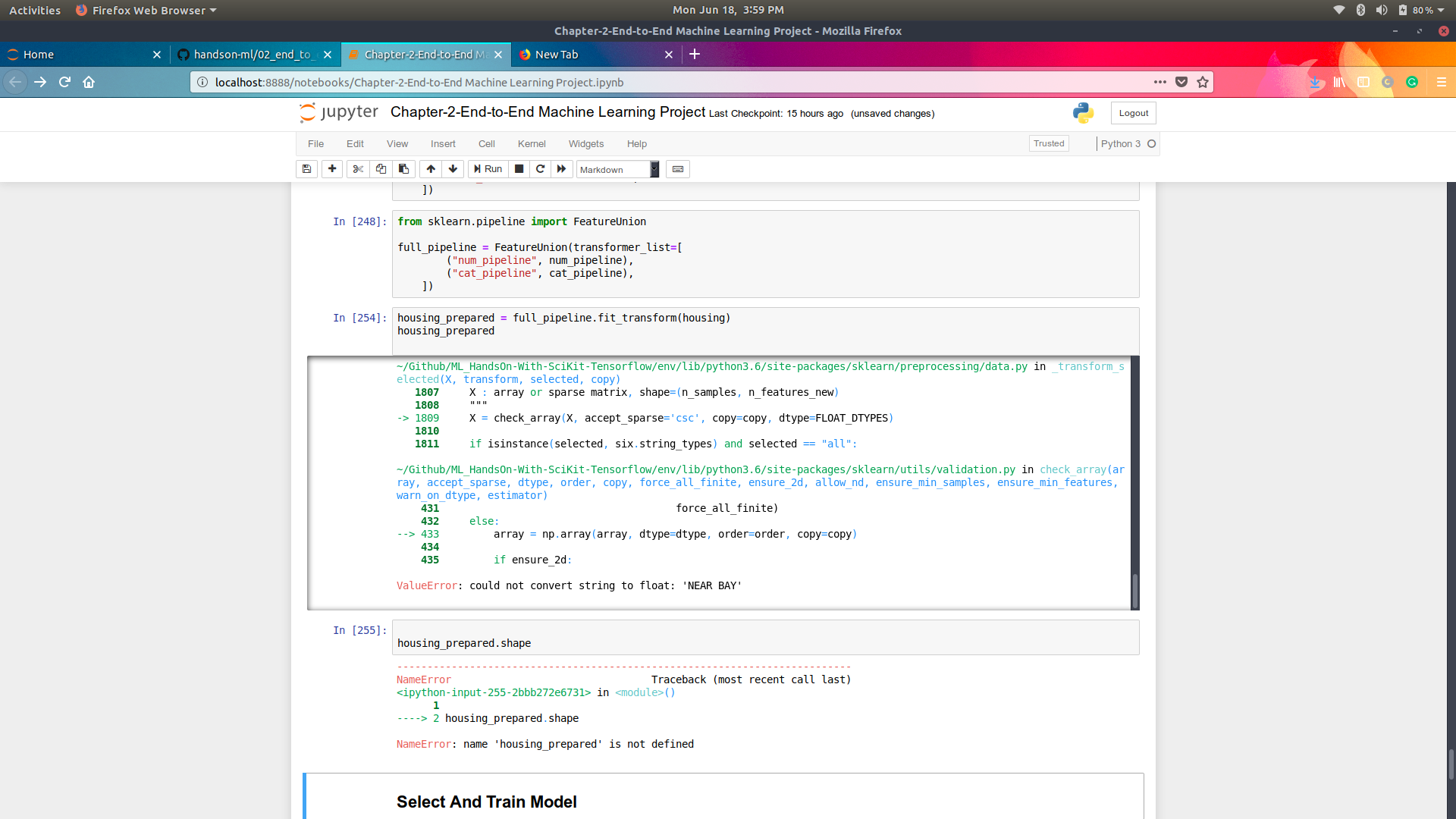


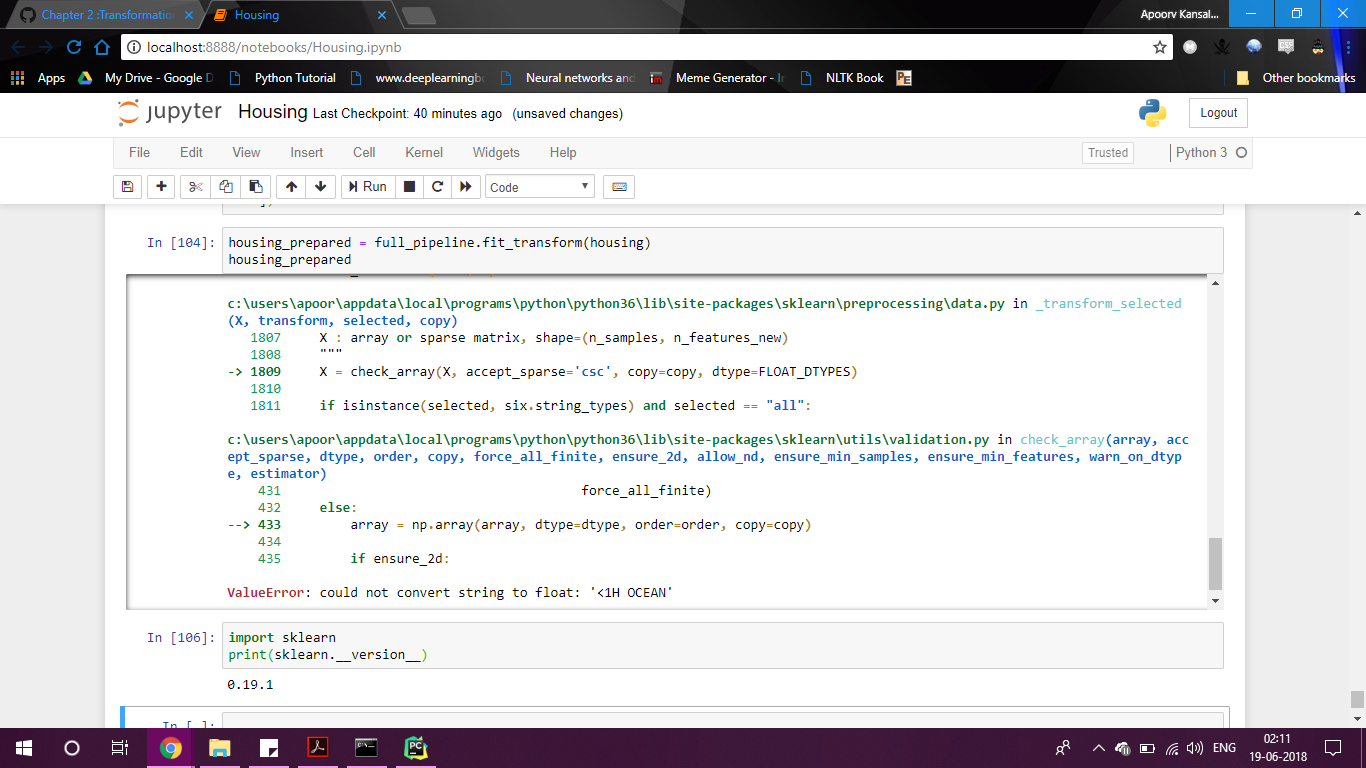



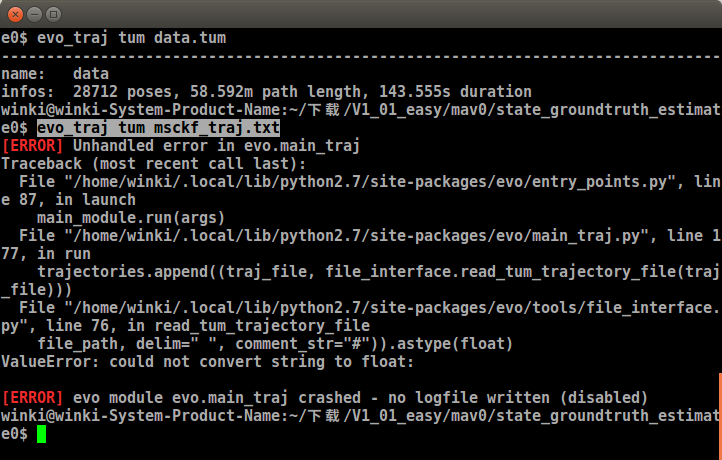











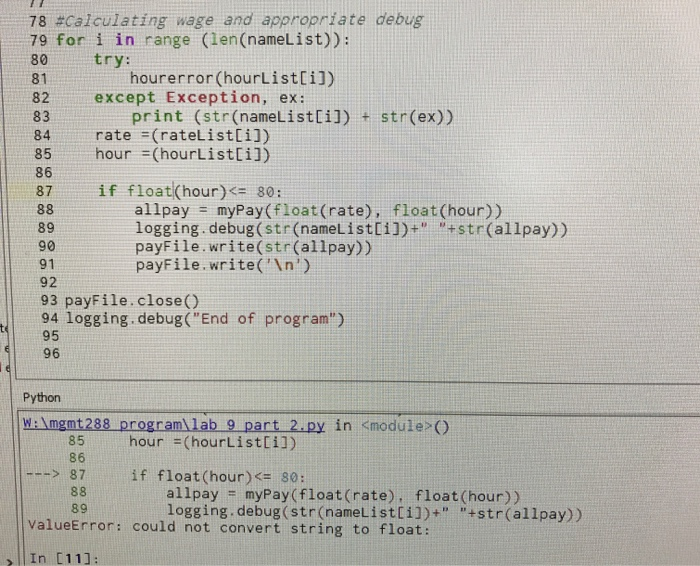
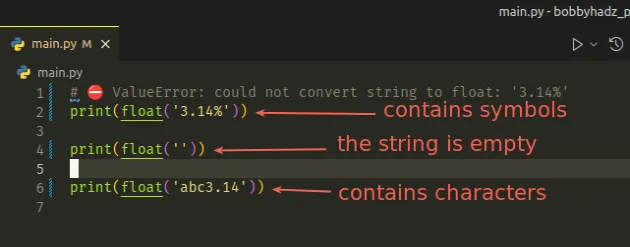


![SOLVED] Valueerror: could not convert string to float: Solved] Valueerror: Could Not Convert String To Float:](https://itsourcecode.com/wp-content/uploads/2023/06/valueerror-could-not-convert-string-to-float.png)



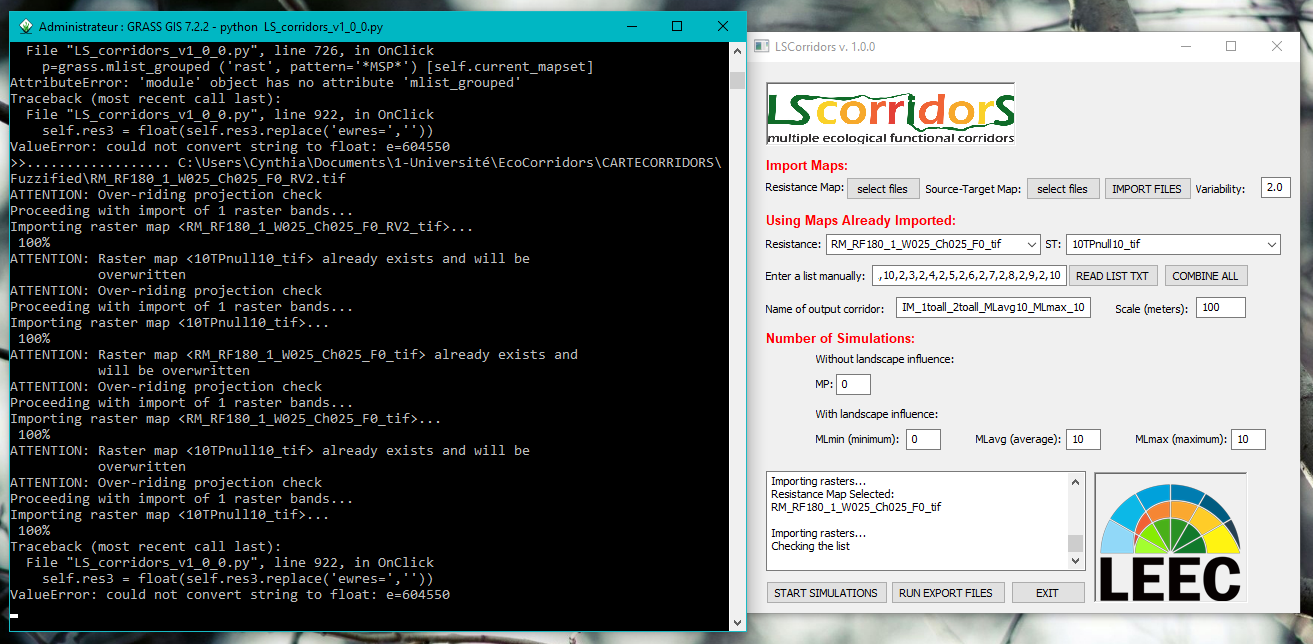




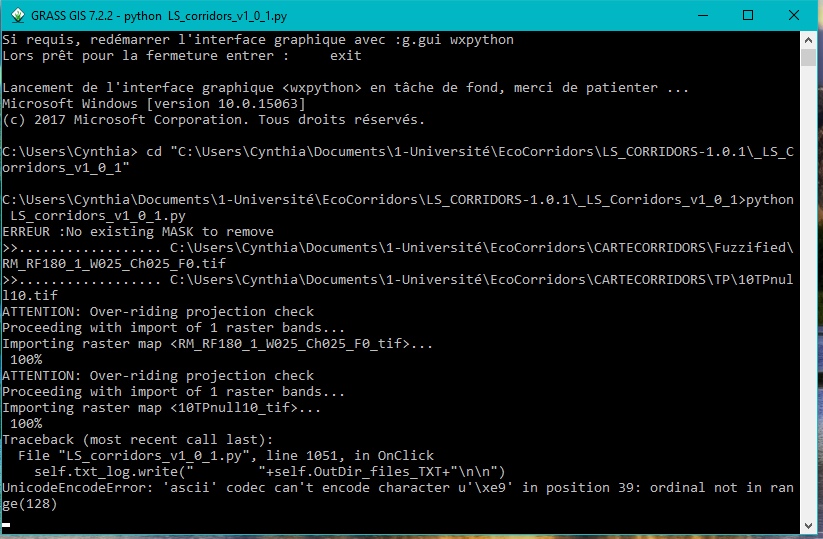




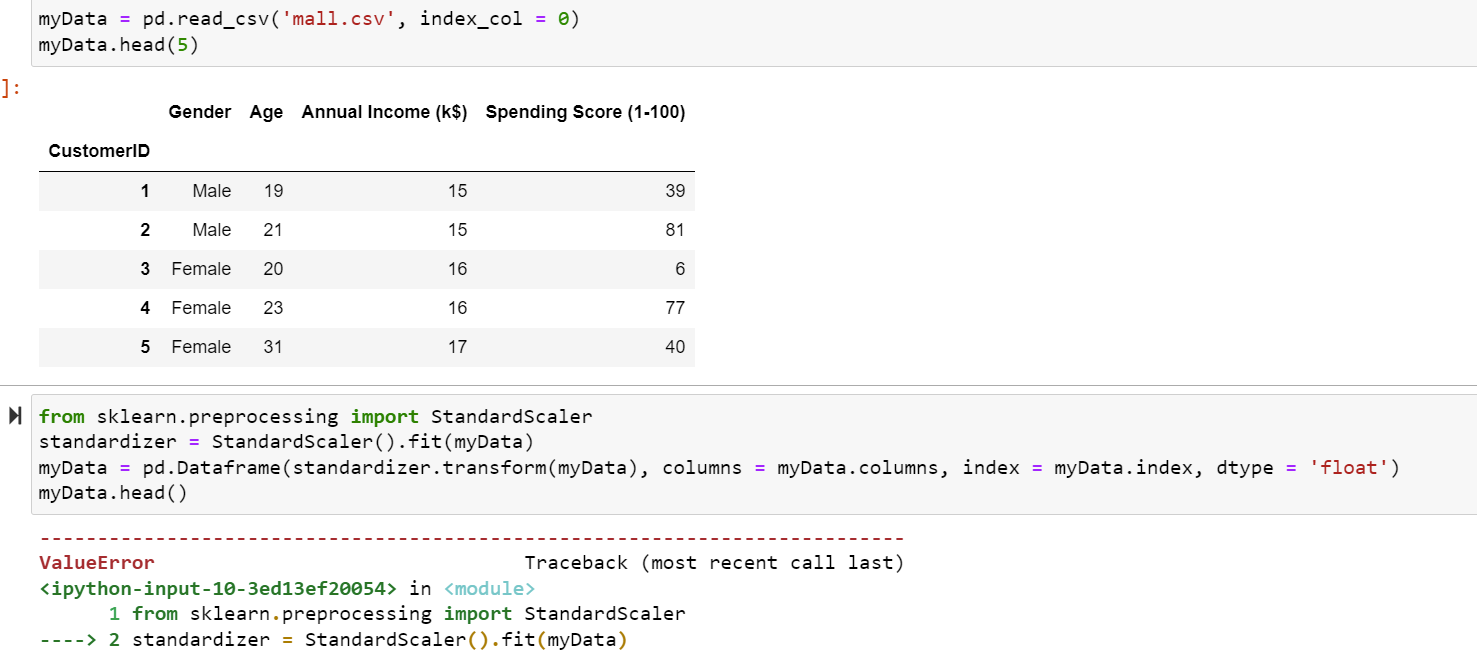





Learn more about the topic valueerror: could not convert string to float:.
- ValueError: could not convert string to float in Python
- ValueError: could not convert string to float: id – Stack Overflow
- Fix ValueError: could not convert string to float – Codedamn
- Convert String to Float in Python – GeeksforGeeks
- Convert String to Float and Back in Java | Baeldung
- Converting Pandas DataFrame Column from Object to Float – Datagy
- ValueError: could not convert string to float in Python
- How to Fix in Pandas: could not convert string to float – Statology
- How to fix ValueError: could not convert string to float
- Valueerror: could not convert string to float: Easy ways to fix it …
- Could Not Convert String To Float Python
- Python valueerror: could not convert string to float Solution | CK
- Solved: ValueError: could not convert string to float
- ValueError: could not convert string to float – Yawin Tutor
See more: https://nhanvietluanvan.com/luat-hoc